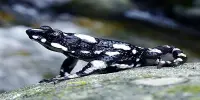You have undoubtedly spotted spiders everywhere because it is Halloween. In addition, it is not only the ones dressed up. Because they have a lot to accomplish in the fall, spiders are out in force. They mate, lay eggs, and then die in the spring, allowing the next generation to take over the earth.
The “pumpkin spider,” which gets its name from its bulbous, rust-colored thorax and is most active around Halloween, is perhaps the most seasonal of Bay Area spiders. The pumpkin spider, also known as the European garden spider or cross orb weaver, is an invasive species from Europe that is largely innocuous to the ecology. It has a “holarctic” distribution, which means it may be found over most of the northern hemisphere.
The Halloween season is as good a time as any to highlight some of nature’s lesser-known species, and what better spider than Araneus marmoreus, the pumpkin spider, to do so? This bodacious spider is bringing Halloween fun with its vivid orange abdomen, which resembles a jack o’ lantern on eight legs; there is more booty than you can shake a stick at, too… Is not it a great costume idea?
Marbled orb weaver is another name for this species, which belongs to the Araneidae family. Females are more likely to dress in festive pumpkin costumes since their large abdomens complement the gourd look, but males are typically half their size. Pumpkins spiders, like other orbweavers, are not deemed medically important in the book of spider boo-boos, thus she is completely safe.
According to Charles Griswold, the arachnid’s curator at the California Academy of Sciences, orb weavers account for around 25% of spider variety, and there are probably more than 30 species in the Bay Area. The majority of orb weavers use poison to kill their prey, but none of them are toxic to people.
The nominate variation of A. marmoreus has a pumpkin-orange belly, whereas the pyramidatus variant has a whiter abdomen with a black mark towards the back. Both are distributed across the Northern Hemisphere; however, pyramidatus is more common in Europe. These silk spinners start working on egg cocoons in October, so if you notice any this Hallowe’en, give them some room so they do not disrupt the arrival of next spring’s fresh abundance of spindly pumpkins.
















